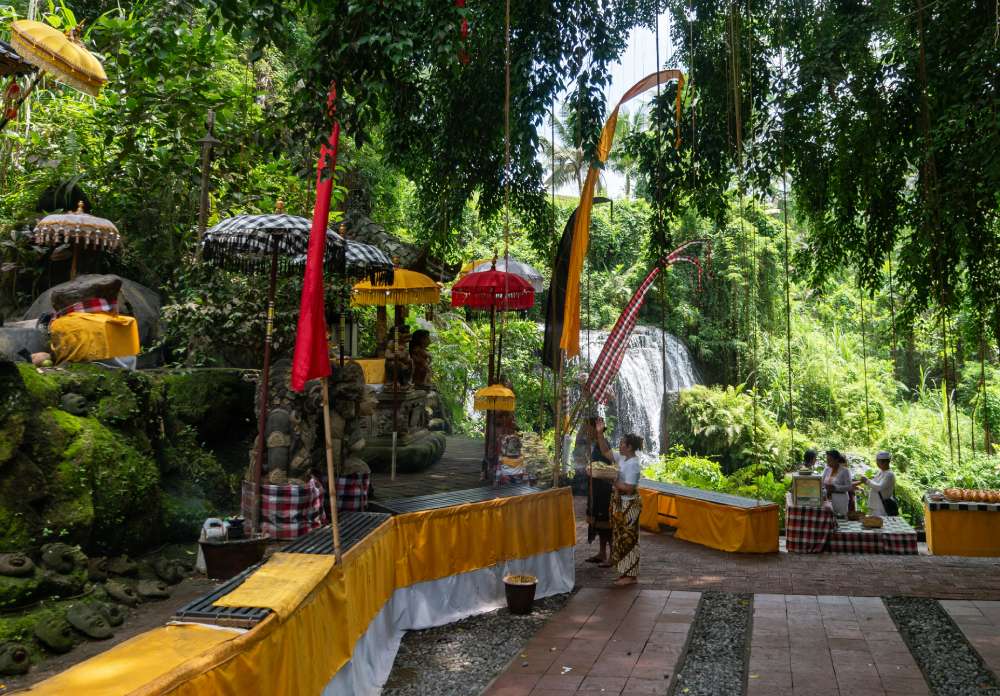
West of Ubud, in the hinterlands of Abiansemal, a twin waterfall has become the go-to destination to experience the unique Balinese cleansing ritual known as melukat. At Taman Beji Griya Waterfall, nature and Balinese spiritual practices come together.
Bali is blessed with countless natural wonders: gorgeous waterfalls seemingly down every valley, or forests that scatter the rugged upland terrains of central Bali. For the Balinese Hindu, these aspects of nature are more than just landscapes to admire, they are often revered and considered holy: mountains the abode of the ancestors, lakes guarded by deities. Water, especially, is paid much respect as an element that cleans and purifies. Bodies or sources of water are thus used as sites of purification (penglukatan), sacralisation (pesucian) and collection for ceremonial holy water.
Holy spring temples are thus visited to conduct the self-purification or cleansing ritual, known as melukat. The most famous example of this being Pura Tirta Empul in Tampaksiring. Holy water can also be obtained at pura beji, temples with holy wells. These will often be overseen by temple priests (mangku) or high priests (pedande) who help to preserve the sanctity of the water source and administer it properly to the public.
In the case of Griya Gede Manuaba Punggul, the household of a Brahmin high priest, the beji under their care is found in the depths of a verdurous gorge created by the Campuhan Agung River. It was often used as a hermitage, a place of meditation, for the ancestors of the griya, with ultimate seclusion found in the thicket of forest and the roar of the waterfall. In 2018, the current head of the household, Ratu Ida Pedanda Gede Buruan Manuaba and son Ida Bagus Eka Giri Artha were meditating at the beji when they heard a whisper from ‘beyond’ (pawisik). It was an instruction to revitalise the entire beji area, to give the public access to the holy waters and make it a place of worship.
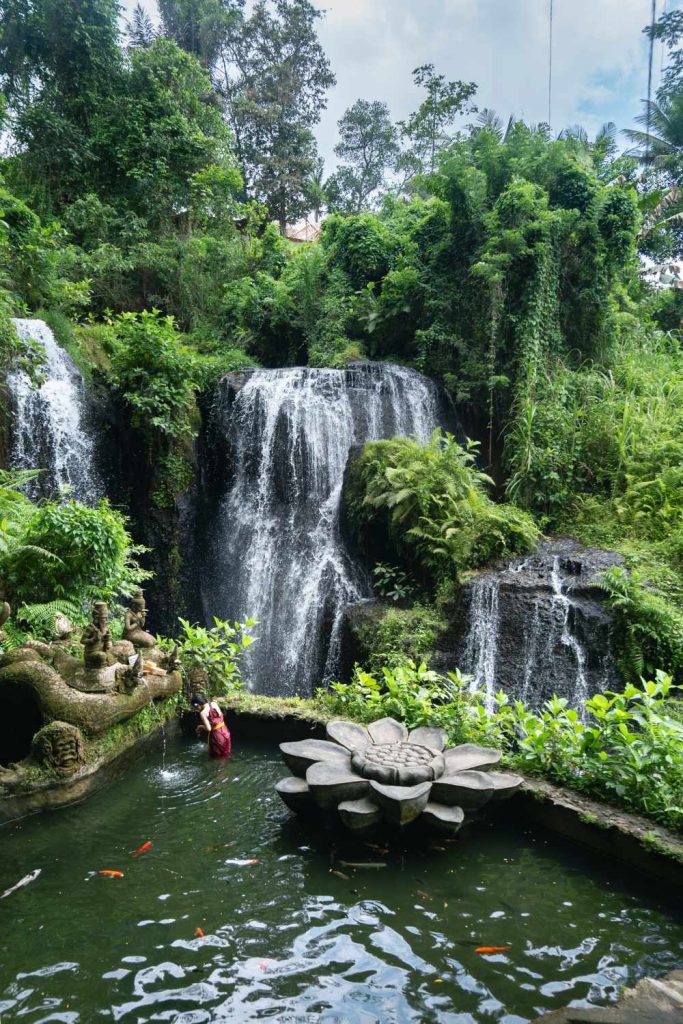
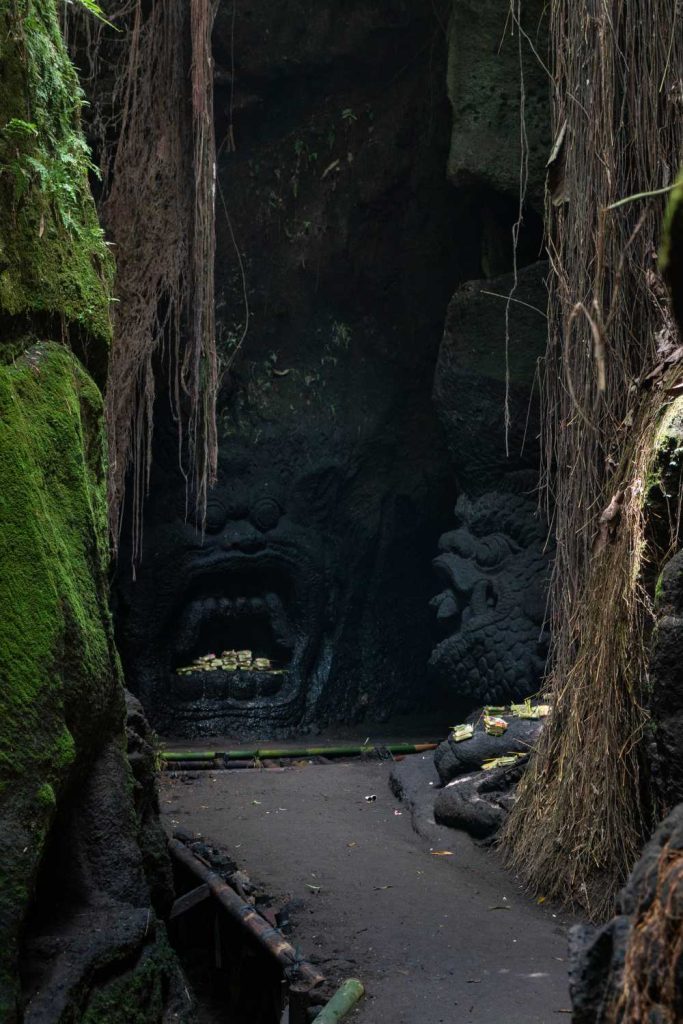
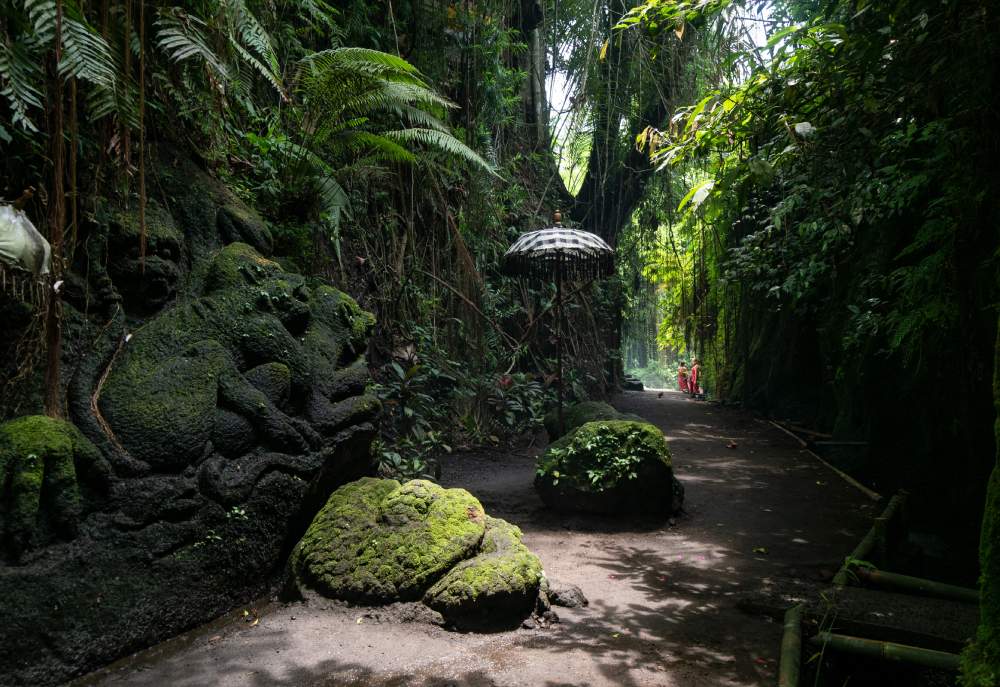
The area is indeed blessed, home to nine natural springs, a twin waterfall and a cave hidden between the steep cliff walls. Thus, Ida Bagus Eka Giri Artha built upon this natural endowment and created a spiritual destination for all to experience.
Today, ‘Taman Beji Griya Waterfall’ has been developed into a welcoming and accessible site to experience a unique melukat cleansing or purification ritual, different from those found at other holy spring temples.
Dressed appropriately in sarong and sash, visitors are guided from the top of the valley into a serene prayer area, backdropped by the Dewi Gangga twin waterfall. Here, the five-stage melukat experience begins.
A priest lays the initial offerings and welcoming prayers before visitors descend the verdant ravine down to the riverbed and into the narrow gorge corridor. The smoke from the burning incense rises through the rays of sunlight that pierce through the jungle canopy, creating quite the mystical setting amongst the moss-covered statues and wall carvings. Further one goes into a hidden cave found deep in the gorge, where the Penglukatan Tamba Sunia (Tamba Sunia Purification) is located, whose waters are said to be healing and are also a blessing for offspring. It gets its name from ‘tamba’ (medicine) and ‘sunia’ (unseen), i.e. invisible medicine.
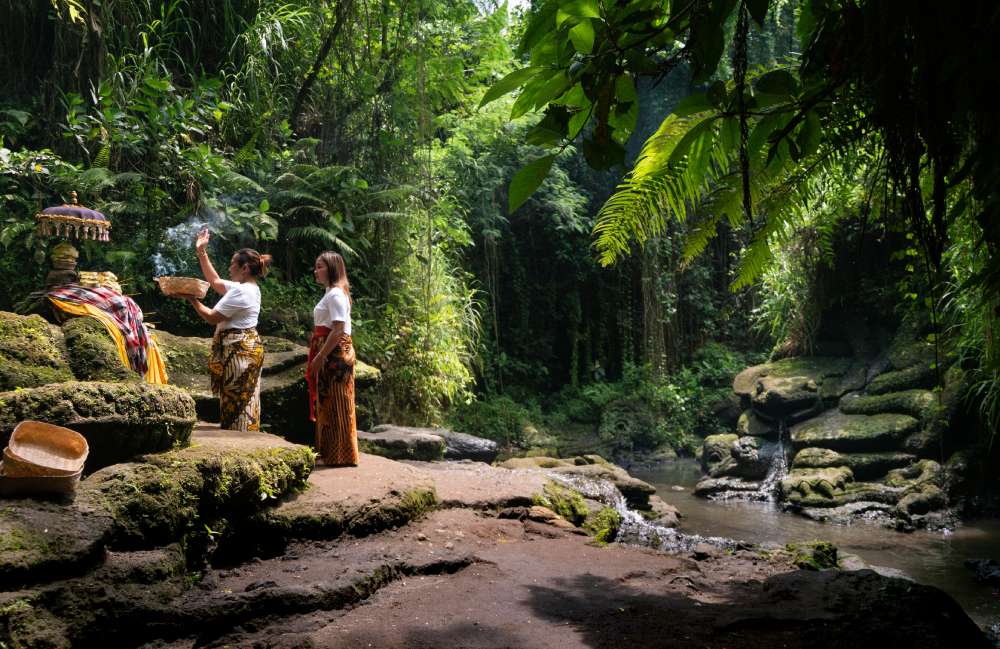
Back between the narrow gorge walls, one undergoes another cleansing at Bulakan Rambut Sedana (Rambut Sedana Spring water). This is said to be a blessing for fortune, prosperity and wealth, symbolised through the hanging kepeng or pis bolong Chinese coins that are hung up in offering.
Out of the shadow of the cliffs, the riverbed has been transformed, embellished with impressive carvings upon the boulders and bedrock. It was said that some of the carvings had existed in on these walls for generations, only renovated to accentuate bring out the details of these artisanal displays.
Finally, one walks towards the cascading twin waterfalls that tower 15-metres high, gushing into the rugged gorge and plunge pool. The third stage of the melukat is done under each individual waterfall: under the first, visitors must shout or scream three times as a way of releasing negativity from the body; then under the second waterfall one must laugh out loud as an invitation of positive energy and emotions into the body.
The fourth blessing is found in the pond fed by two holy springs, under which visitors must bathe. These two springs symbolise the deities Ratu Niang Sakti & Ida Betara Lingsir, granting health, grace and prosperity. The pond overlooks the beautiful water found just below. The final stage is done back at the prayer area where a traditional melukat is conducted by the temple priests using the waters of both young and mature coconuts. This concludes the entire cleansing ritual, taking visitors on a journey deep into the heart of the gorge.
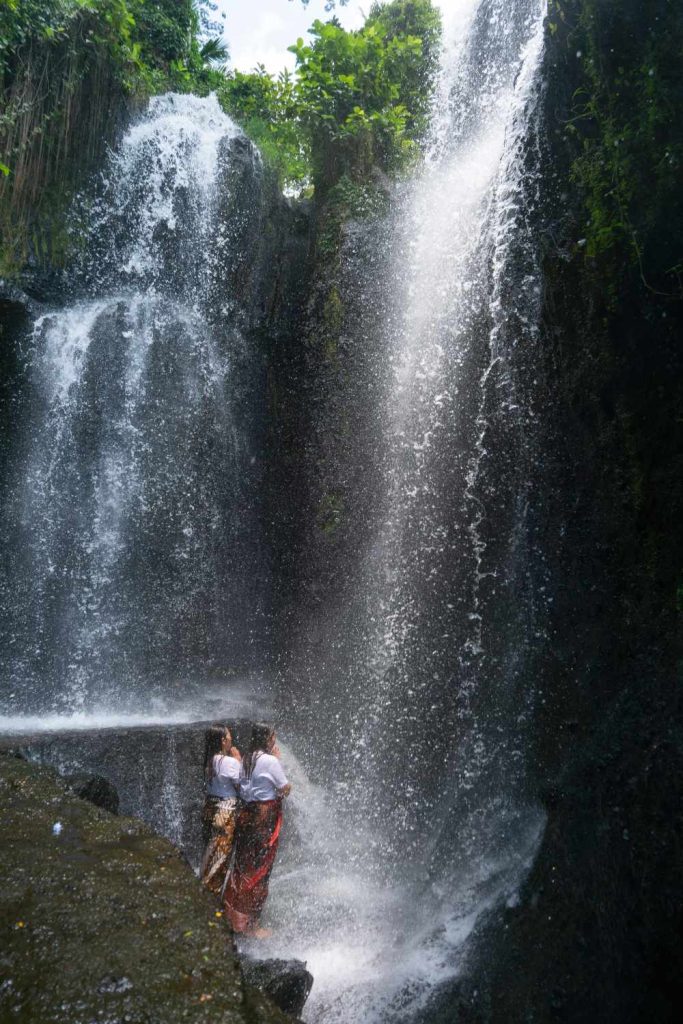
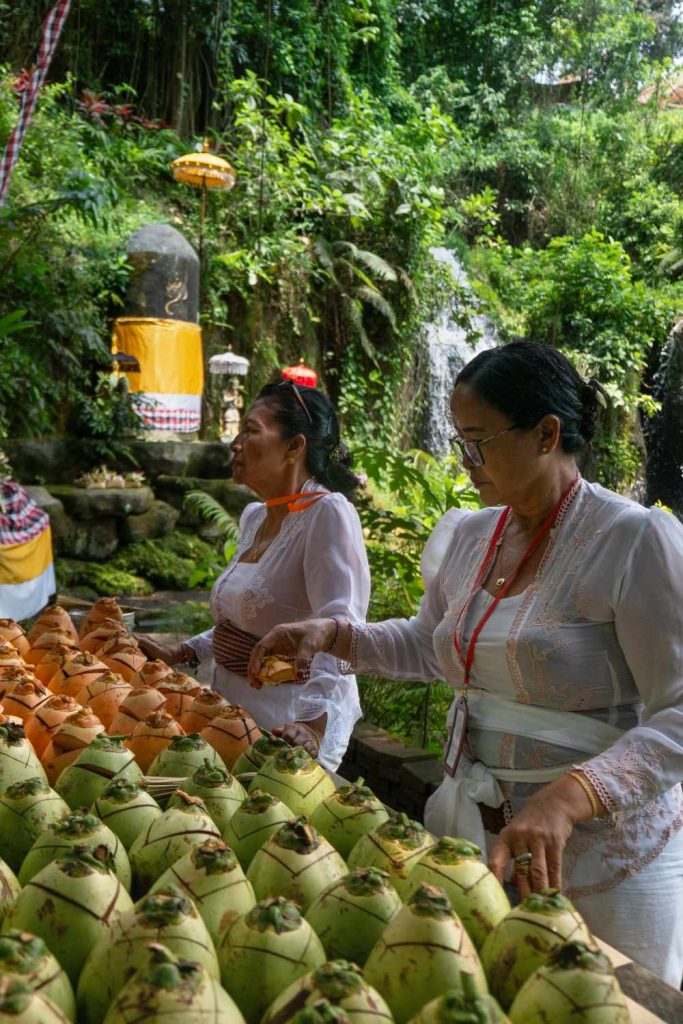
After this experience, visitors are welcome to shower and change at the well-maintained facilities, suited for international visitors, before enjoying refreshments at the café. For those looking to explore a wider range of Balinese healing and wellness practices, Taman Beji Griya Waterfall also offers sessions with Balinese priests for palm reading and healing therapies at an additional cost.
Guests can take a tour of the area without the melukat for IDR 200,000, or take part in the full melukat experience for IDR 300,000 which includes an English-speaking guide, required offerings, sarong and sash, locker and towel plus a drink.This helps to fund the continued development and access of the beji, which is used freely by practicing Balinese Hindu who still come here for worship.
Those keen for a unique experience of Bali’s spiritual cleansing ritual, conducted in a stunning natural location, should consider a visit to Taman Beji. Open everyday from 9am to 6pm.
Taman Beji Griya Waterfall
Jl. Mawar, Punggul, Kec. Abiansemal
+62 812 3767 6644 | @griya_bejiwaterfall
griyabejiwaterfall.com







